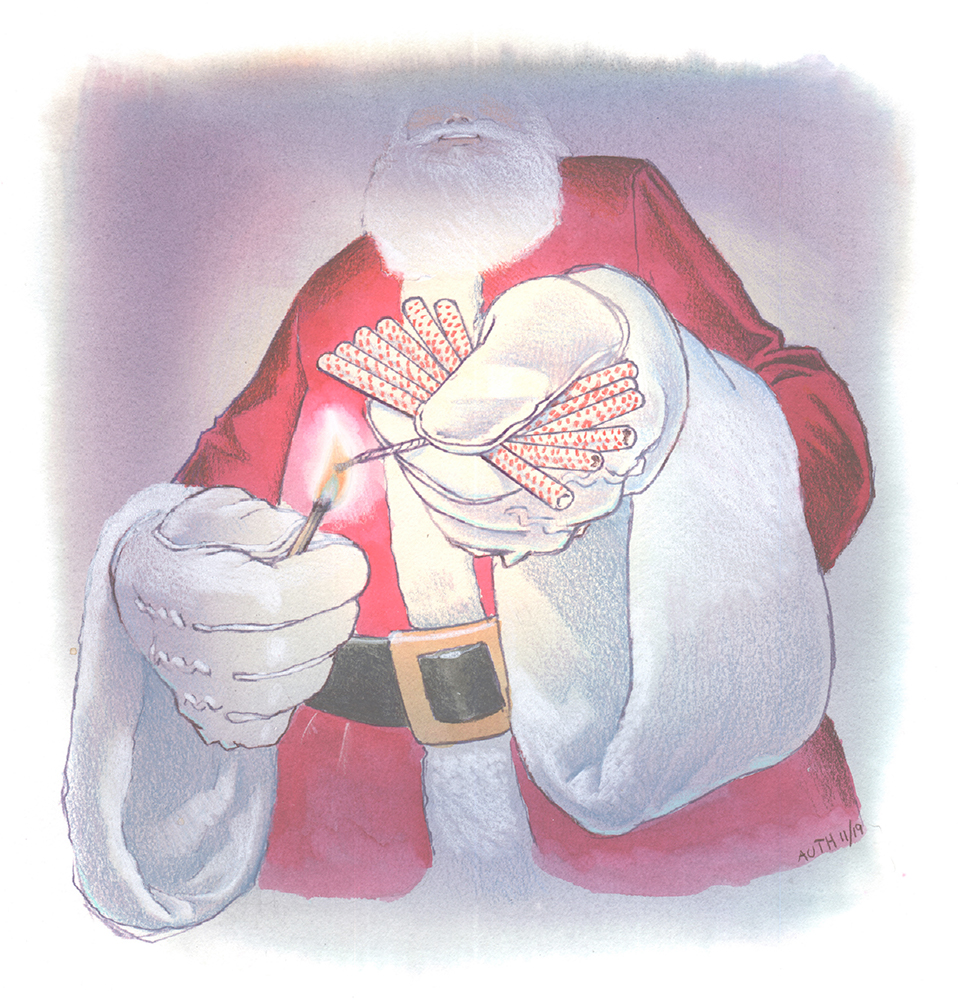
Today Christmas down South looks pretty much like Christmas in other parts of the country — without the snow.
But it wasn’t always that way. At one time, Christmas in Dixie was marked with customs and practices unique to the region. What happened?
Let’s look back a bit.
By the time Christmas came here, it was already established in the English countryside as a mid-winter festival for farm folk. The harvest was in. There was food in the pantry. So, they cut what greenery remained, decked the halls, laid out the feast, and had one last merry time before winter descended with a vengeance.
In Dixie, as in England, Christmas was celebrated most enthusiastically among the lower classes, who used the opportunity to engage in activities frowned upon by their “betters.”For example, on December 25, 1796, Indian Agent Benjamin Hawkins, down close to the forks of the Coosa and Tallapoosa, wrote disapprovingly of how he was visited by a party of slaves who had been released from their work to have “a proper frolic of rum drinking and dancing.” What bothered Hawkins most was that “white people and Indians met generally at the same place with them and had the same amusement.”
Southern yeomen farmers often celebrated Christmas in the open. With the weather still warm enough for outdoor activity, it was common “for a crowd of young men to band together, with guns and every sort instrument of music, or of noise, [and] go ‘Christmasing’ among their neighbors,” from whom they demanded “a treat.”
Southern towns and cities witnessed a variation on the same theme, as bands of people — usually men, usually young, and usually from “the lower orders” — wandered about the streets, making merry and making mischief. Well into the late 19thcentury, these boisterous celebrations continued, but slowly they changed as the region changed.
The Post-Civil War “New South” imposed a commercial culture on Dixie and the region’s rising middle class abhorred all kinds of rowdyism. The approach these community leaders took to civil conduct was to restrict activities that threatened peace and tranquility. Also contributing to the calming of Christmas was the growing influence of evangelical religious groups that encouraged worship instead of revelry.
Meanwhile, other forces were beginning to have an impact on the way Southerners celebrated Christmas. Although the commercialization of the holiday was nothing new, during the late 19thcentury increasingly sophisticated advertising campaigns elevated gift-giving to a national passion and made Santa Claus a national icon. In short, Christmas became a national holiday.
Today Southerners still add a few distinctive twists to the season. We buy and shoot more fireworks and hold more parades (remember the weather). But for the most , the modern South is solidly within the national mainstream when it comes to celebrating Christmas. So, if you are looking for evidence of the Americanization of Dixie, there is no better time or place to start than Christmas.
Now excuse me, I’ve got to go buy my firecrackers.





